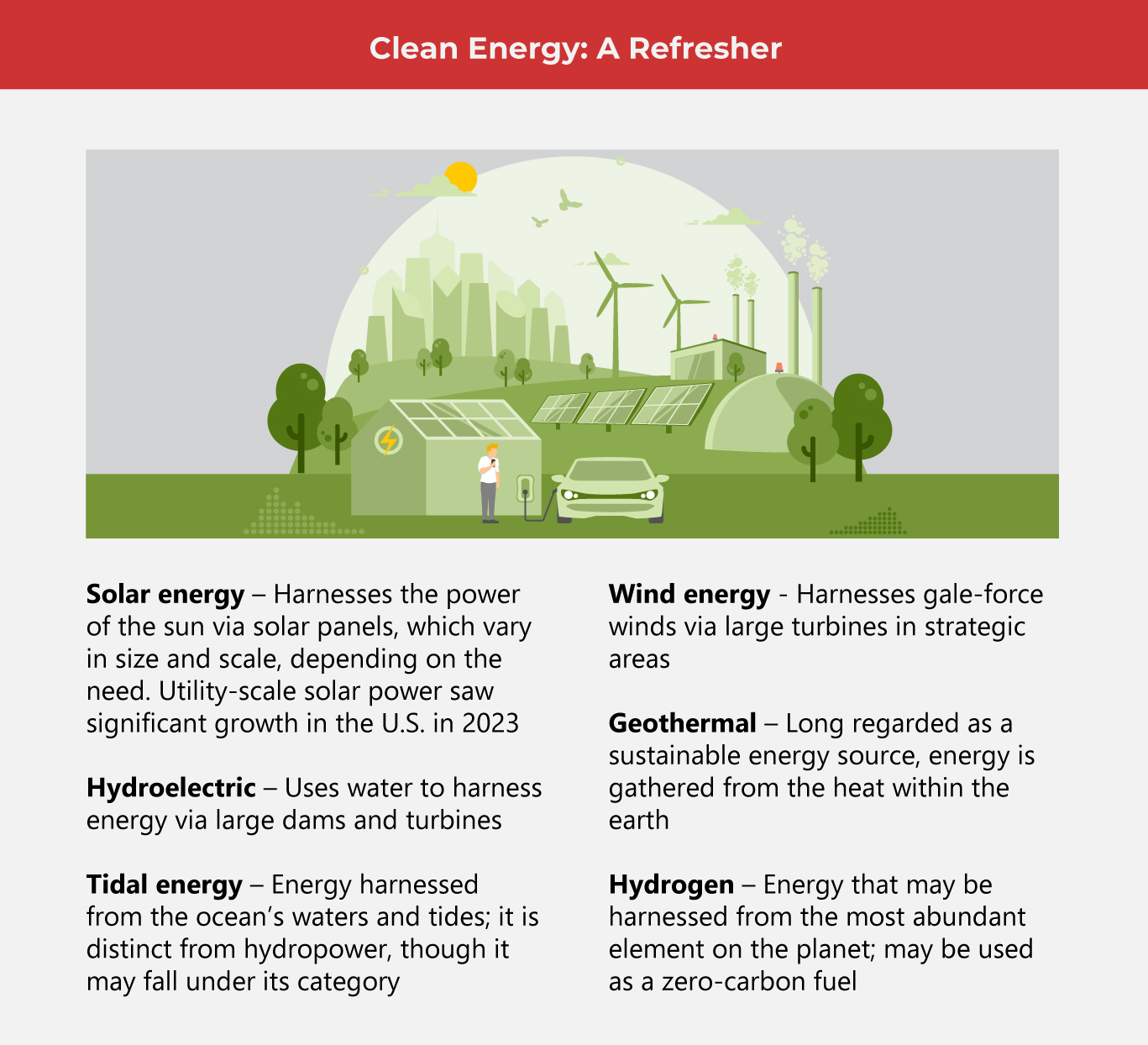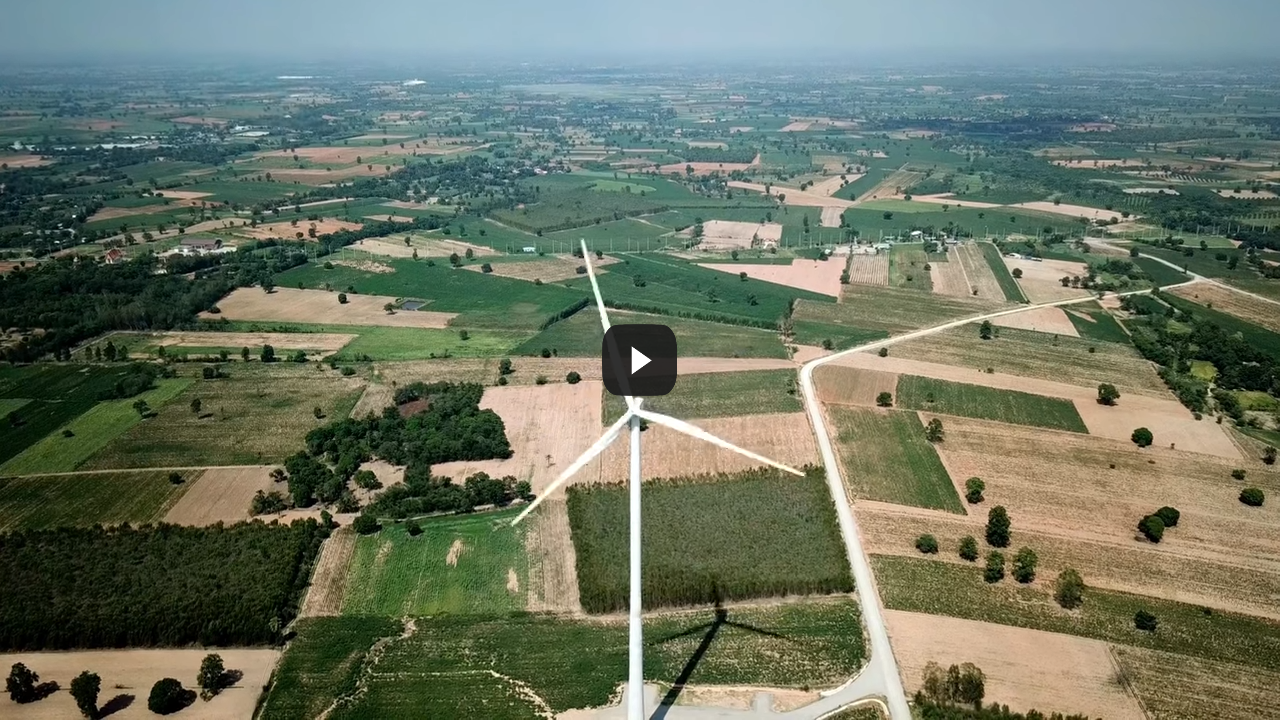Catching up with Clean Energy Trends

Deloitte released its 2024 Renewable Energy Industry Outlook, which provided some key milestones for clean energy.
Highlighted findings from the report showed trends for renewables in terms of investment, competitiveness, and demand. Drivers for developing several renewables were also enumerated, and significant challenges were cited regarding supply chain, grid, and even manpower.
As an overview of the renewable landscape, the report mentions that out of all renewable energy sources, solar energy has far outpaced others in the United States. On the other hand, wind energy experienced challenges such as rising costs, permit delays, and transmission capacity.
(Also Read: Sun and Mirrors: A Powerful Pair)
On the upside, supply chain bottlenecks relaxed as clean energy and climate laws took effect. 
Key Trends for the Renewable Energy Industry 2024
Five key trends were outlined in Deloitte’s 2024 Renewable Energy Industry Outlook.
First, renewables experienced significant investments in 2024, specifically for solar and clean hydrogen. On the other hand, wind energy faces transmission challenges, which have become their primary hurdle.
In terms of supply chain, Deloitte notes that the clean energy industry is reshoring. Experts say that shorter supply chains may bolster resilience. Strategic partnerships, digitalization, and the recycling of critical materials are trends to look out for.
Workforce-wise, skilled workers and retraining the right talent are critical because of the rapid build-out and the domestic supply chain. Generative AI was included as a factor when it comes to shaping talent requirements. The report describes that Generative AI tools will be used to guide and accelerate renewable project decisions, processes, and even community engagement.
Renewables as a resilience strategy come fourth. In the face of power failure for primary or traditional sources of energy, the resilience of renewables emerges as a solid backup plan. The report says that a shift in the perception of reliability in favor of renewables may be imminent.
Lastly, a resurgence in geothermal and renewable natural gas technologies could beef up renewable portfolios in 2024, creating synergies between various channels such as intermittent and baseload renewables.
New Movers and Shakers of the Clean Energy Industry
CNET called them “clean energy’s new wave”—three young scientists below the age of thirty whose vision and ideas are steering the way towards a clean energy transition.
Bobuchi Ken-Opurum
Providing affordable, clean energy options for low-income households is her advocacy. Bobuchi Ken-Opurum currently spearheads projects that aim to provide this to people in need. She works as director of research at the Texas Energy Poverty Institute and has completed a statewide report on the experiences of low-income households in Texas and how they struggle to afford their energy requirements.
Thanks to her study, solutions such as solar energy and batteries are being looked into, in addition to building “resilience hubs” to help people being hit with power outages or heat waves.
One of her pilot projects helps people build affordable housing fitted with solar panels, along with educating families about renewable energy.
Marisa Sisk
Another community-minded mover and shaker in the clean energy space is 24-year-old Marisa Sisk. Her drive to serve her Native American tribal communities was what led her to study the potential and power of solar energy. Microgrids are her purview. She founded her own renewable energy company called Sunstone Energy.
She says that securing energy sovereignty is vital for tribal communities, who find themselves being at the mercy of traditional commercially run energy companies. Marisa Sisk is at the helm of pilot projects that work with tribal community heads as well as the women from these communities.
Sanjana Paul
Sanjana Paul might be considered a white hat hacker, and she combines her love of hackathons with climate science to tackle roadblocks in the clean energy transition for the U.S.
Earth Hacks, an organization she founded and still runs, started in a summer hackathon. It has since become somewhat of a global movement, with over 60 hackathons to date and over 4,000 participants.
Sanjana Paul’s expertise as a computer engineer stems from root cause analysis, which has become useful in figuring out problems in addressing climate crisis. Discovering a process problem within the energy transition, her work has focused on untangling the factors why renewable energy projects most often do not get deployed.
She is currently working with various communities to establish more workable mechanisms such as community benefit agreements that will enable making the transition to clean energy a reality.  As one of the Top 20 EMS companies in the world, IMI has over 40 years of experience in providing electronics manufacturing and technology solutions.
As one of the Top 20 EMS companies in the world, IMI has over 40 years of experience in providing electronics manufacturing and technology solutions.
We are ready to support your business on a global scale.
Our proven technical expertise, worldwide reach, and vast experience in high-growth and emerging markets make us the ideal global manufacturing solutions partner.
Let's work together to build our future today.
Other Blog



